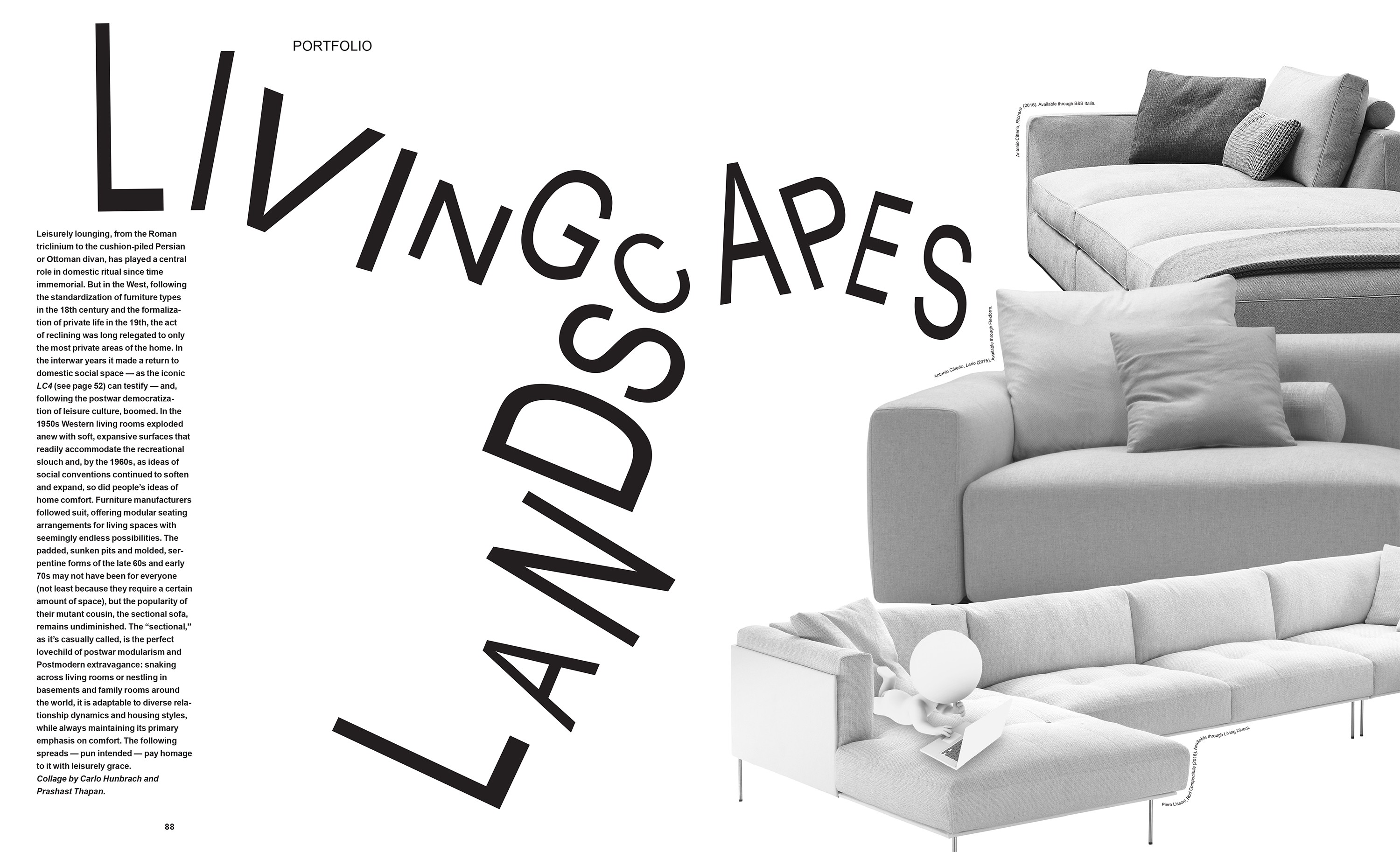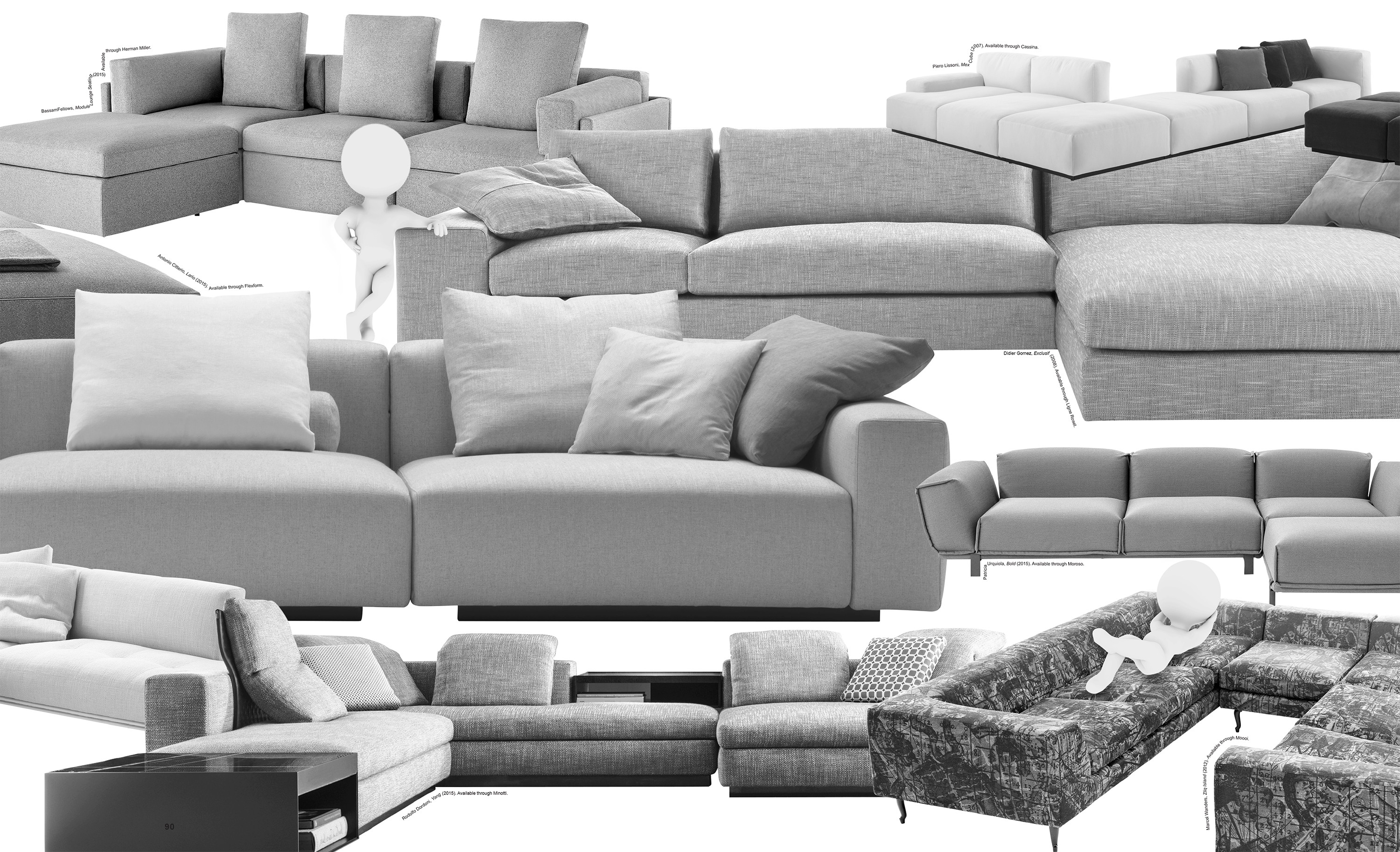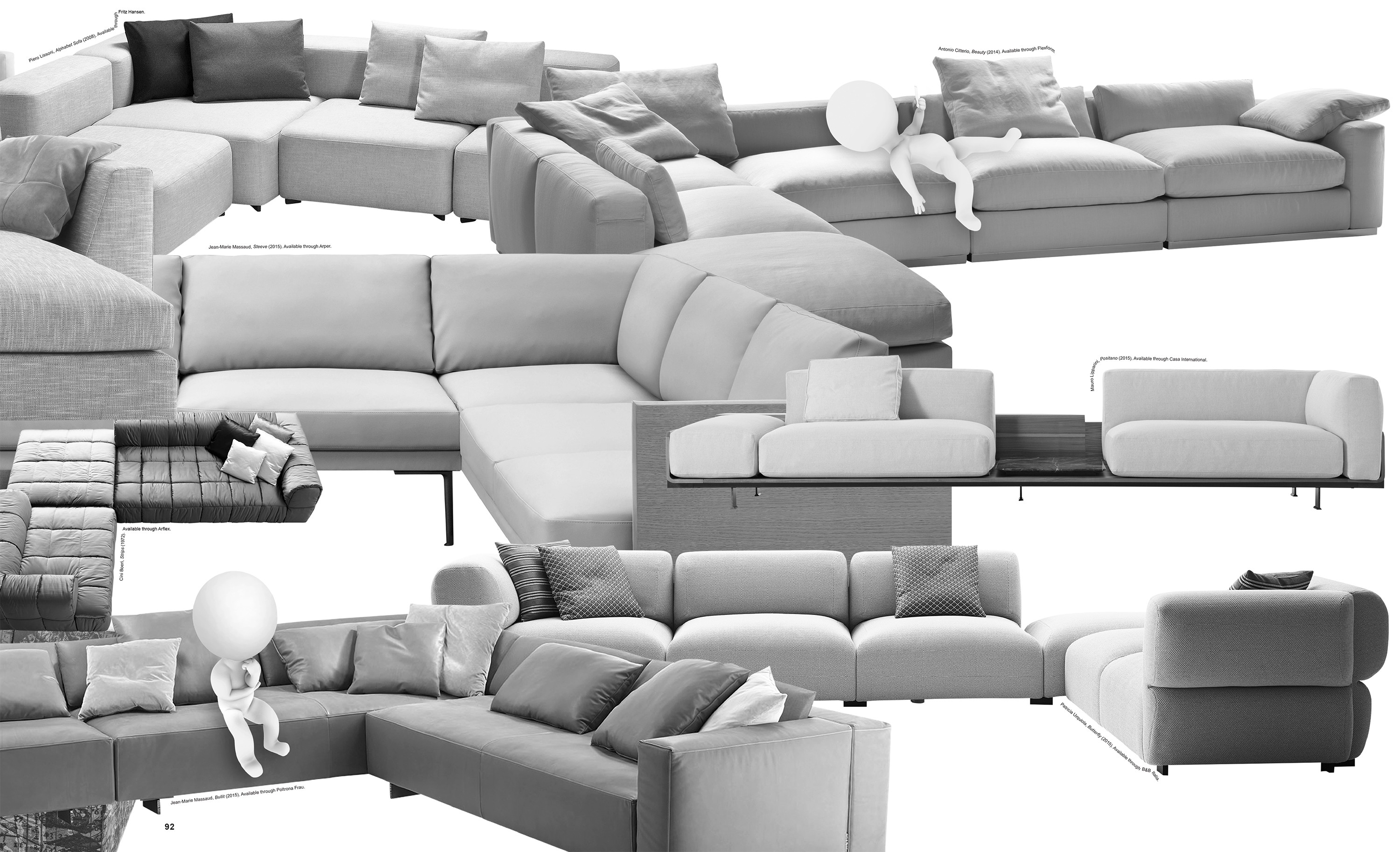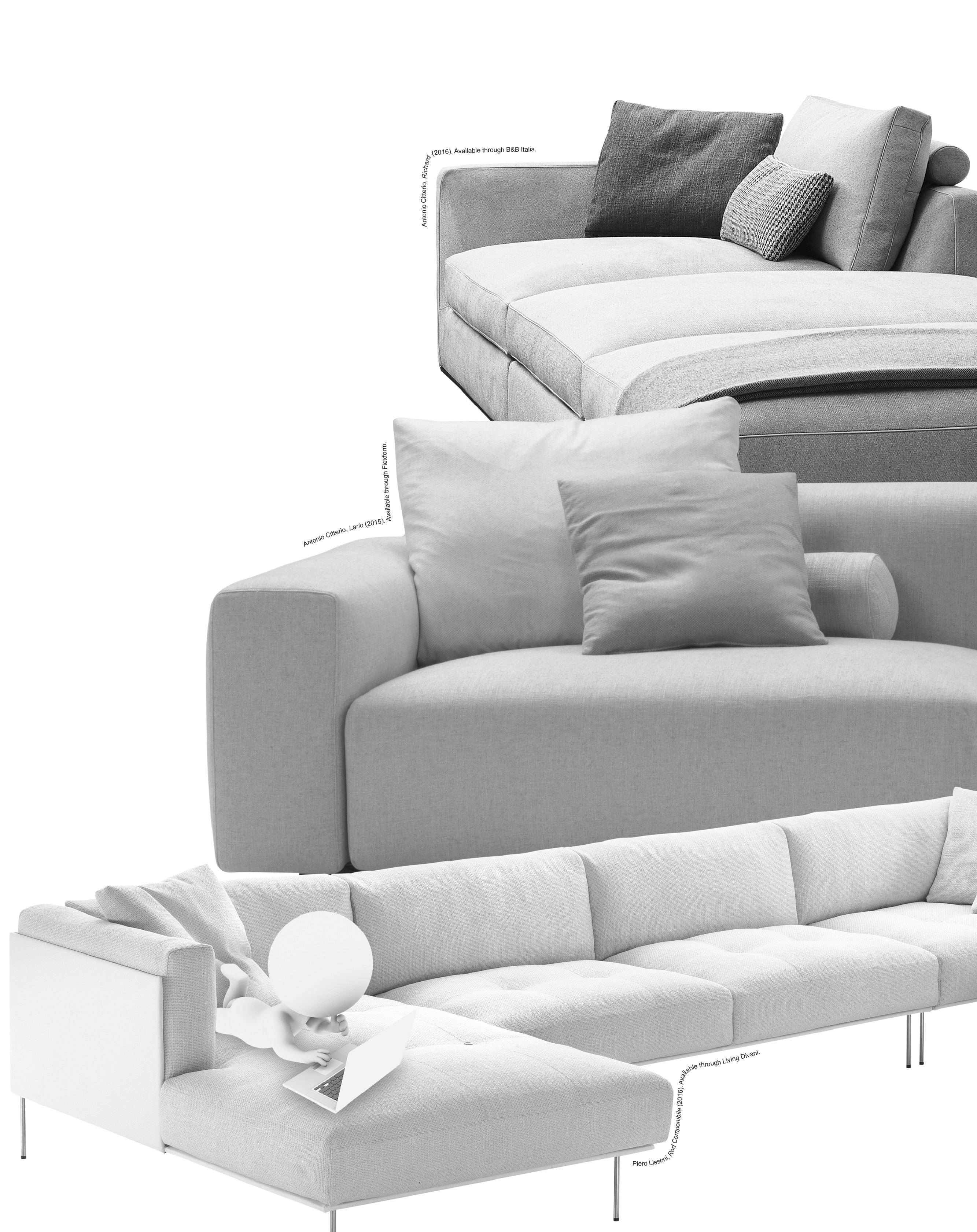LIVING LANDSCAPES: A SECTIONAL SOFA DESIGN STORY
Leisurely lounging, from the Roman triclinium to the cushion-piled Persian or Ottoman divan, has played a central role in domestic ritual since time immemorial. But in the West, following the standardization of furniture types in the 18th century and the formalization of private life in the 19th, the act of reclining was long relegated to only the most private areas of the home. In the interwar years it made a return to domestic social space — as the iconic LC4 can testify — and, following the post-war democratization of leisure culture, boomed. In the 1950s Western living rooms exploded anew with soft, expansive surfaces that readily accommodate the recreational slouch and, by the 1960s, as ideas of social conventions continued to soften and expand, so did people’s ideas of home comfort. Furniture manufacturers followed suit, offering modular seating arrangements for living spaces with seemingly endless possibilities. The padded, sunken pits and molded serpentine forms of the late 60s and early 70s may not have been for everyone (not least because they require a certain amount of space), but the popularity of their mutant cousin, the sectional sofa, remains undiminished. The “sectional,” as it’s casually called, is the perfect lovechild of post-war modularism and Postmodern extravagance: snaking across living rooms or nestling in basements and family rooms around the world, it is adaptable to diverse relationship dynamics and housing styles, while always maintaining its primary emphasis on comfort. The following spreads — pun intended — pay homage to it with leisurely grace.
Taken from PIN–UP 20, Spring Summer 2016.
Collage by Carlo Hunbrach and Prashast Thapan.





